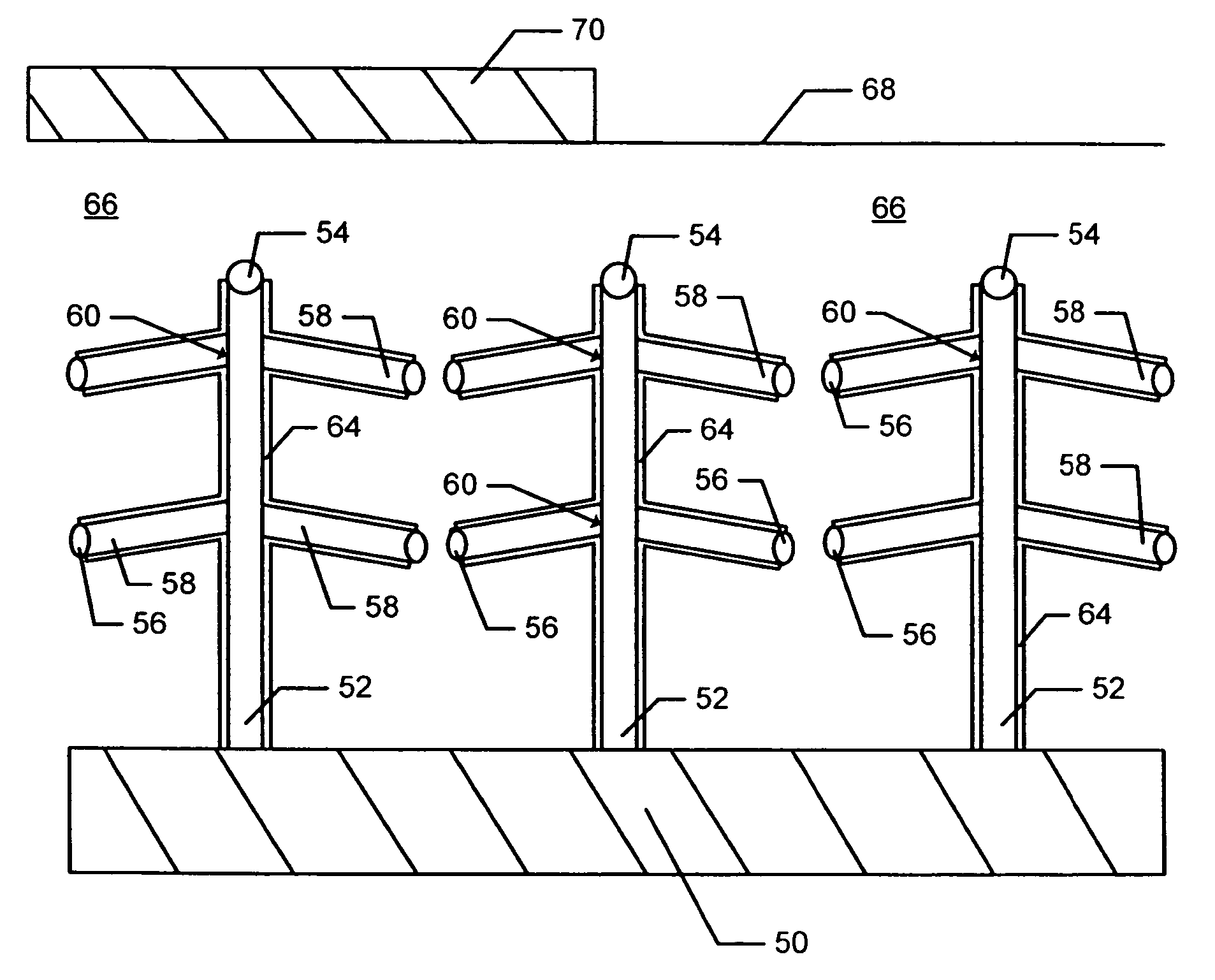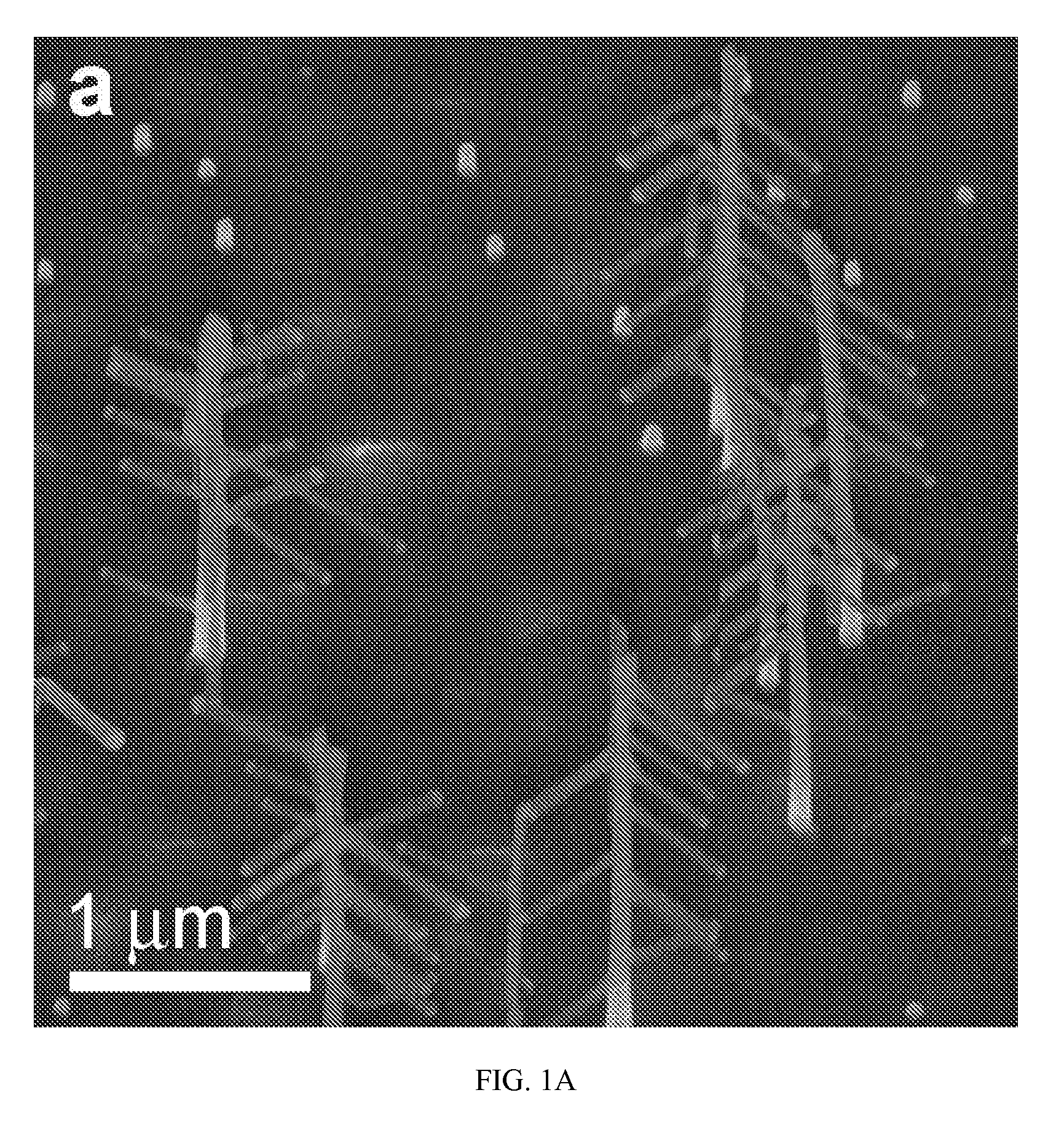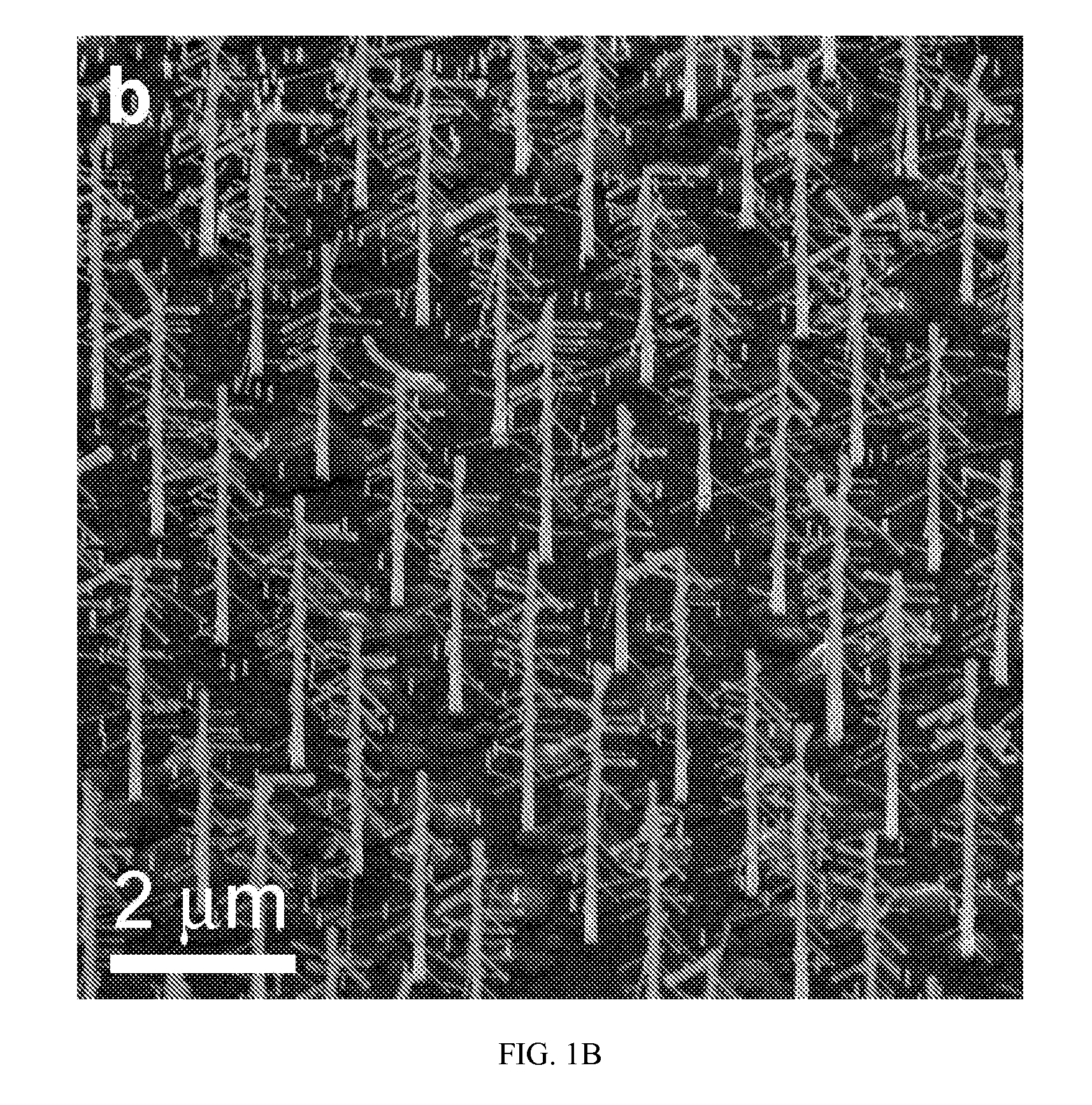Nanostructures formed of branched nanowhiskers and methods of producing the same
a technology of nanowhiskers and nanostructures, which is applied in the field of nanostructures formed of branched nanowhiskers and methods of producing the same, can solve the problems of yielding and achieve the effect of more complex “tree” structures
- Summary
- Abstract
- Description
- Claims
- Application Information
AI Technical Summary
Benefits of technology
Problems solved by technology
Method used
Image
Examples
example
[0057]Growth of nanostructures comprising branched nanotrees was performed in two steps. The first was the growth of vertical GaP nanowires to serve as “trunks.” These were grown by the vapor-liquid-solid (VLS) mechanism. Gold seed particles were deposited on GaP (111)B substrate (˜10 mm2) by aerosol deposition, at a density of 0.5 particles per square micron of substrate. To achieve this, gold was evaporated in a high temperature (1850° C.) furnace, then passed through a charger to obtain a uniform charge distribution. Then, electrical mobility can be directly associated with size, and so particles are size-selected using a differential mobility analyser (DMA). Next, particles were re-heated (600° C.) to sinter (within the aerosol system), resulting in a compact, spherical shape, then size-selected a second time. As the selected particles thus have a uniform size and are singly charged, the total particle concentration can be determined by measuring the current from particles impin...
PUM
| Property | Measurement | Unit |
|---|---|---|
| thickness | aaaaa | aaaaa |
| temperature | aaaaa | aaaaa |
| length | aaaaa | aaaaa |
Abstract
Description
Claims
Application Information
 Login to View More
Login to View More - R&D
- Intellectual Property
- Life Sciences
- Materials
- Tech Scout
- Unparalleled Data Quality
- Higher Quality Content
- 60% Fewer Hallucinations
Browse by: Latest US Patents, China's latest patents, Technical Efficacy Thesaurus, Application Domain, Technology Topic, Popular Technical Reports.
© 2025 PatSnap. All rights reserved.Legal|Privacy policy|Modern Slavery Act Transparency Statement|Sitemap|About US| Contact US: help@patsnap.com



